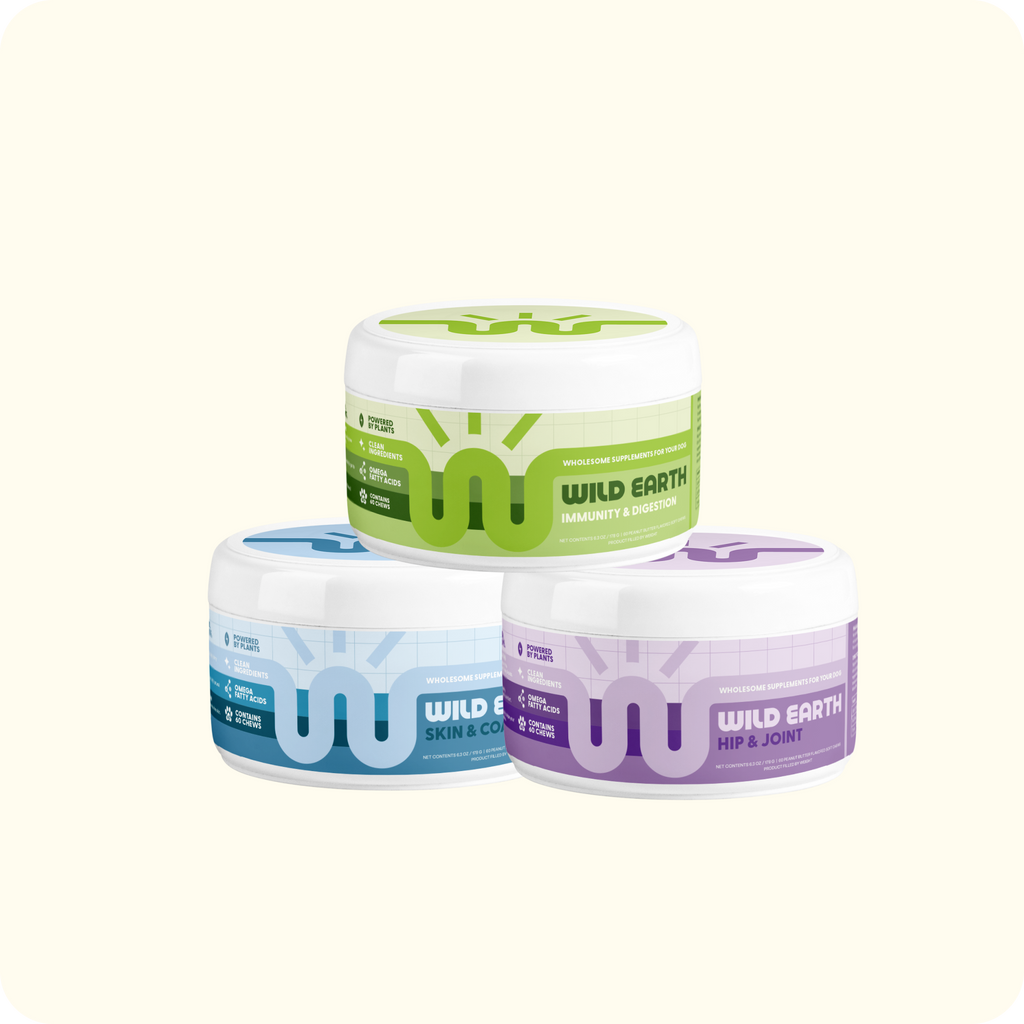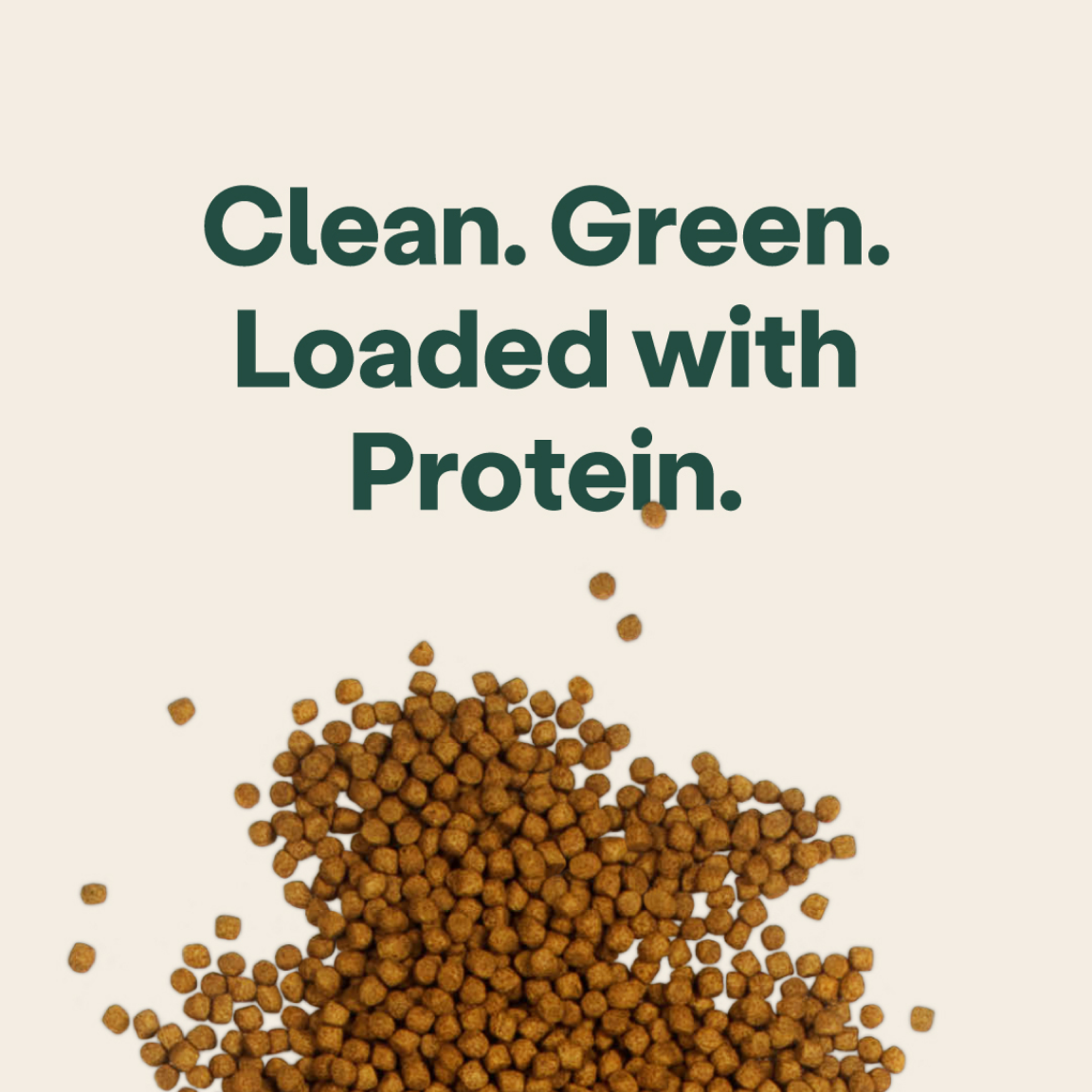

Are Raw Diets Healthy for Dogs?
Written By: Tiffany Ruiz Dasilva, VMD, cVMA | Professional Services Veterinarian, Wild Earth
In recent years, there has been a growing trend among pet owners to feed their dogs a raw diet. These proponents of feeding raw believe it to be healthier and more natural as dogs descended from wolves. While raw feeding enthusiasts argue for its numerous health benefits, it is essential to understand the potential dangers associated with this practice. In this article, we will explore the benefits and risks involved in raw feeding dogs.
What is Raw Feeding?
Raw feeding involves providing dogs with uncooked meat, bones, organs, and sometimes vegetables and fruits. Options for feeding include home preparation or selecting a commercially available diet. Commercially available diets range from complete prepared diets to pre-mix diets that require consumers to add their choice of raw protein source. These diets may or may not be nutritionally complete and balanced.
Is Raw Feeding More “Natural”?
As mentioned earlier, the reason pet parents tend to feed raw is largely based on the misconception that dogs are carnivores like wolves, and therefore should be fed like wolves.
The reality, however, is that dogs diverged from wolves over 15,000 years ago (that’s a long time ago!), and evolved alongside humans, eating their scraps which included grains, fruits, and vegetables. During domestication, dogs gained many copies of the gene responsible for starch digestion, just as humans did during the agricultural revolution. This makes dogs more accurately classified as omnivores rather than carnivores.
Dogs differ from carnivores in many ways, but some of the most notable include:
- Dogs have lower protein and amino acid requirements
- Dogs can utilize the precursor provitamin A (found in plants) to form
active vitamin A - Dogs can more easily utilize vitamin D from plant sources
- Dogs can convert tryptophan to niacin
- Dogs can synthesize taurine
Even further, remember that wolves only eat to maintain health throughout their reproductive years, whereas we feed our dogs for optimal health and longevity.
What are the Potential Health Benefits of Raw Diets?
When compared to meat-based kibble diets, a 2021 study based on data from a questionnaire found that dogs fed a raw diet in their postnatal period (1–6 months of age) had a lower risk of developing inflammatory bowel disease later in life, whereas those fed kibble had a higher risk.1 The authors attributed this to a change in the microbiome of raw diet fed dogs. These same possible alterations in the microbiome led to adverse effects in another study where 33 dogs were fed either a “sensitive skin” meat-based kibble diet or a commercial raw food diet.2 While those fed a raw diet had several positive changes on blood work such as a lower serum cholesterol, alkaline phosphatase and glucose, they also experienced a significant decrease in folate, B12 and iron. Based on the current evidence to date, research on raw diets does not show a clear benefit on the gut microbiome, and may increase the risk of pathogen exposure.3
Anecdotes surrounding raw diets include that they have anti-inflammatory and/or anti-oxidative effects as they theoretically contain higher levels of antioxidants and lower levels of heterocyclic amines (HAs). HAs are produced when muscle meat is cooked at a higher temperature such as during the production of meat-based kibble diets. Furthermore, those who choose raw diets often claim that these diets are nutritionally superior and provide many benefits such as a shiner coat and improvement in energy and immunity. Unfortunately, many of these health benefit claims have not been scientifically evaluated and therefore remain unproven.
What are the Potential Risks of Raw Diets?
Although there are anecdotes of potential benefits of raw feeding, there exist many risks associated with feeding raw diets.
1. Imbalanced Nutrition
Raw feeding diets are often presented as providing a more natural and balanced approach to canine nutrition. However, achieving a truly balanced diet with all the necessary nutrients in appropriate proportions can be challenging. Dogs require a precise balance of proteins, fats, carbohydrates, vitamins, and minerals to thrive. Without careful planning and expert guidance, raw feeding may result in nutritional imbalances, leading to deficiencies or excesses of essential nutrients.
Evaluation of 200 published home-prepared recipes for adult maintenance in dogs revealed a deficiency in at least one essential nutrient according to the Association of American Feed Control Officials guidelines in 95% of diets, while 83.5 percent of recipes had multiple deficiencies.4
This does not only apply to those preparing these diets at home. Upon evaluation, many commercial RMBDs have had nutritional imbalances such as incorrect calcium to phosphorus ratio.5 This is especially true for those produced by small companies avoiding synthetic nutrient supplements. Moreover, raw feeding often involves incorporating a wide range of ingredients, such as organ meats, which can lead to excessive intake of certain nutrients. Overconsumption of certain vitamins, such as vitamin A or D, or minerals like calcium or phosphorus, can result in toxicities and adversely affect the dog's health.
2. Bacterial Contamination
One of the most significant concerns with raw feeding is the risk of bacterial contamination. Raw meat, including chicken, beef, and fish, can harbor harmful bacteria such as Salmonella, E. coli, and Campylobacter. In fact, prevalence rates for contamination with Salmonella in commercial RMBDs ranges from 20% to 48%, and reports of raw meat pet food containing zoonotic foodborne bacteria are increasing.6,7 While many dogs may tolerate pathogens, others succumb to illness, and some have even died due to infection with pathogens in their raw food diets.
These bacteria not only pose a threat to dogs, but can continue to be shed in the saliva and feces even if the dog consuming the raw food does not show signs of illness. This poses a risk for humans who come into contact with the dog, especially people who are young, old, pregnant or immunosuppressed.
According to a report published by Public Health England in 2017, of four individuals (one of which died) infected with multidrug-resistant (MDR) E.coli O157, three were feeding a raw commercial frozen diet to their dog.8 All were positive for shiga toxigenic E.coli, and in one case the bacteria was cultured out of the freezer. This clearly demonstrates that although freezing and freeze-drying may reduce the number of bacteria, it does not destroy all pathogens.
3. Risk of Choking and Injuries
Feeding dogs raw bones is a serious health risk as bones are not only choking hazards, but they can also cause severe injuries to the dog's mouth, throat, or gastrointestinal tract. Further, contrary to popular belief, bones do not protect against periodontal disease.
4. Increased Handling and Storage Risks
Raw feeding requires careful handling and storage practices to prevent cross-contamination and bacterial growth. Mishandling raw meat or improperly storing it can increase the risk of bacterial contamination, leading to foodborne illnesses for both the dog and its owners.
Based on overwhelming scientific evidence, The American Veterinary Medical Association and the American Animal Hospital Association oppose the unregulated feeding of raw foods and discourage “the feeding to cats and dogs of any animal-source protein that has not first been subjected to a pro- cess to eliminate pathogens, because of the risk of illness to cats and dogs, as well as humans”.9, 10
More Benefits, None of the Risks
Have you been searching for a food to feed your dog that will provide the same potential benefits as a raw diet, but doesn’t carry the same risks? Wild Earth is the answer.
Wild Earth is a high protein, sustainable, nutritionally complete and balanced adult dog food that is free from the most common food allergens for dogs. Our formulas are packed with clean, high quality, whole food ingredients and high quality protein - namely yeast which contains all 10 essential amino acids. Our yeast protein contains up to 49% protein by weight, which is significantly higher than the 24% your dog would get from beef! It’s also incredibly sustainable as yeast can grow in just 3 days and requires far fewer resources than any animal-based protein. Our nutrient profile is based on chemical analysis of the finished product, which allows us to guarantee amounts of omega -3 and -6 fatty acids for skin and coat health, brain development and heart health.
Being plant-based, our food is inherently free from the top food allergens for dogs which are animal-based products such as beef, chicken and dairy. This makes Wild Earth a great choice for food allergic dogs.
More studies are being published that show plant-based food can be healthier for some dogs than conventional diets, and promote longevity. The most recent, comprehensive, and first long-term study was published in 2023. Fifteen clinically healthy client-owned dogs were fed a complete and balanced plant-based diet for a year, and the authors concluded that health was maintained.11
In 2022 alone, three new survey studies were published—all which sug- gest that a plant-based diet may be healthier for some dogs than conventional diets and promote longevity for our best friends. The first of these, an owner survey, found that dogs who were fed plant-based diets “reported fewer health disorders, specifically with respect to ocular, gastrointestinal and hepatic disorders”.12 Dog longevity was also reported to be greater for dogs fed plant-based diets, with purely plant-based dogs reportedly living 1.5 years longer than dogs fed meat.
The second of these studies evaluated the health perceptions of 100 pet guardians who fed their dog a plant-based diet, and found that dogs who were fed plant-based dog food found the food palatable, with no adverse changes in appetite or weight.13 Health improvements after 3–12 months were also reported in coat glossiness, dandruff, skin inflammation, itchiness, external ear canal crusting, fecal consistency, defecation frequency, flatus frequency, flatus antisocial smell, anxiety, aggressive behavior, and stool consumption.
Lastly, the third of these peer-reviewed studies included over 2,500 dogs, and revealed that dogs who eat a well-balanced plant-based diet require less medication, visit the vet less frequently, and suffer from fewer health disorders according to their owners when compared to dogs who eat conventional meat-based kibble diets—suggesting that a plant-based diet may be healthier for some dogs.14
Wondering which Wild Earth formula is best for your dog? Take our quiz to find out!
References
- Hemida M, Vuori KA, Moore R, Anturaniemi J, Hielm-Björkman A. Early Life Modifiable Exposures and Their Association With Owner Reported Inflammatory Bowel Disease Symptoms in Adult Dogs. Front Vet Sci. 2021 Feb 1;8:552350. doi: 10.3389/fvets.2021.552350. PMID: 33598486; PMCID: PMC7882719.
- Anturaniemi J, Zaldívar-López S, Savelkoul HFJ, Elo K, Hielm-Björk- man A. The Effect of Atopic Dermatitis and Diet on the Skin Transcrip- tome in Staffordshire Bull Terriers. Front Vet Sci. 2020 Oct 16;7:552251. doi: 10.3389/fvets.2020.552251. PMID: 33178726; PMCID: PMC7596200.
- Wernimont SM, Radosevich J, Jackson MI, Ephraim E, Badri DV, MacLeay JM, Jewell DE, Suchodolski JS. The Effects of Nutrition on the Gastrointestinal Microbiome of Cats and Dogs: Impact on Health and Disease. Front Microbiol. 2020 Jun 25;11:1266. doi: 10.3389/ fmicb.2020.01266. PMID: 32670224; PMCID: PMC7329990.
- Stockman J, Fascetti AJ, Kass PH, et al: Evaluation of recipes of home-prepared maintenance diets for dogs. J Am Vet Med Assoc 242:1500–1505, 2013.
- Stogdale L.One veterinarian’s experience with owners who are feeding raw meat to their pets. Can Vet J. 2019 Jun;60(6):655-658. PMID: 31156268; PMCID: PMC6515799.
- Jones JL, Wang L, Ceric O, Nemser SM, Rotstein DS,JurkovicDA, Rosa Y, Byrum B, Cui J, Zhang Y, Brown CA, Burnum AL, Sanchez S, Reimschuessel R. Whole genome sequencing confirms source of pathogens associated with bacterial foodborne illness in pets fed raw pet food. J Vet Diagn Invest. 2019 Mar;31(2):235-240. doi: 10.1177/1040638718823046. Epub 2019 Jan 19. PMID: 30663530; PMCID: PMC6838835.
- Freeman LM, Chandler ML, Hamper BA, et al. Current knowledge about the risks and benefits of raw meat-based diets for dogs and cats. J Am Vet Med Assoc 2013;243:1549– 1558.
- Byrne, L., Aird, H., Jorgensen, F., et al. (2018) Investigation into an outbreak of Shiga toxin producing Escherichia coli, Public Health En- gland, August 2017 (No. 2018489).
- AAHA.org. AAHA position statements and endorsements: Raw protein diet.
- AVMA.org. AVMA policies: Raw or undercooked animal-source protein in cat and dog diets.
- Linde A, Lahiff M, Krantz A, Sharp N, Ng T, Melgarejo T. (2023). Do- mestic dogs maintain positive clinical, nutritional, and hematolog- ical health outcomes when fed a commercial plant-based diet for a year. Archives of Clinical and Biomedical Research. doi: https://doi. org/10.1101/2023.02.18.525405
- Dodd SAS, Cave NJ, Adolphe JL, Shoveller AK, Verbrugghe A (2022) Correction: Plant-based (vegan) diets for pets: A survey of pet owner attitudes and feeding practices. PLOS ONE 17(5): e0268982. https://doi. org/10.1371/journal.pone.0268982
- Davies, M. (2022).Reported Health Benefits of a Vegan Dog Food—a Likert Scale-type Survey of 100 Guardians. Archives of Clinical and Biomedical Research, 6, 889-905.
- Knigh tA, Huang E, Rai N, Brown H (2022) Vegan versus meat-based dog food: Guardian-reported indicators of health. PLoS ONE 17(4): e0265662. https://doi.org/10.1371/journal.pone.0265662











































